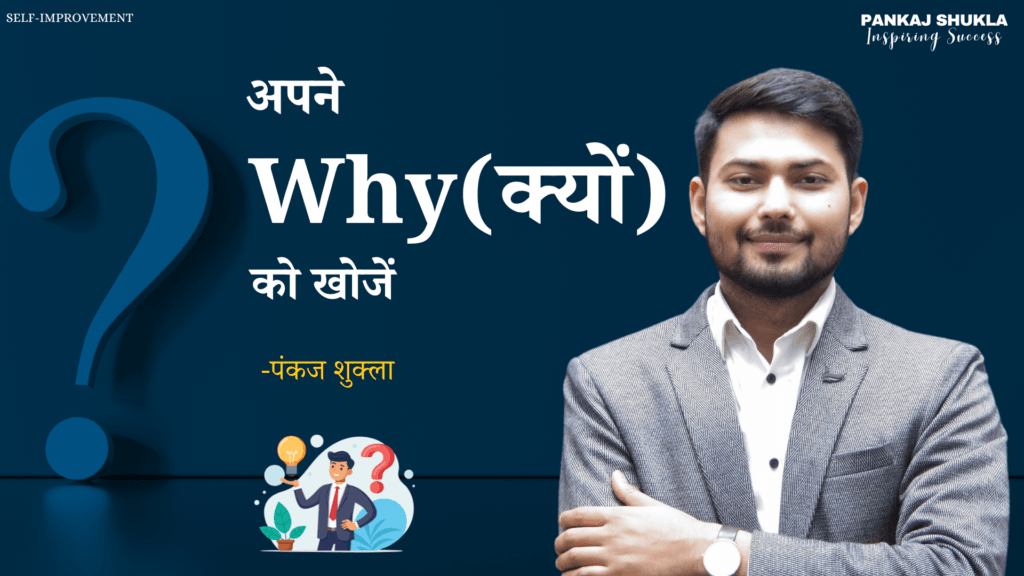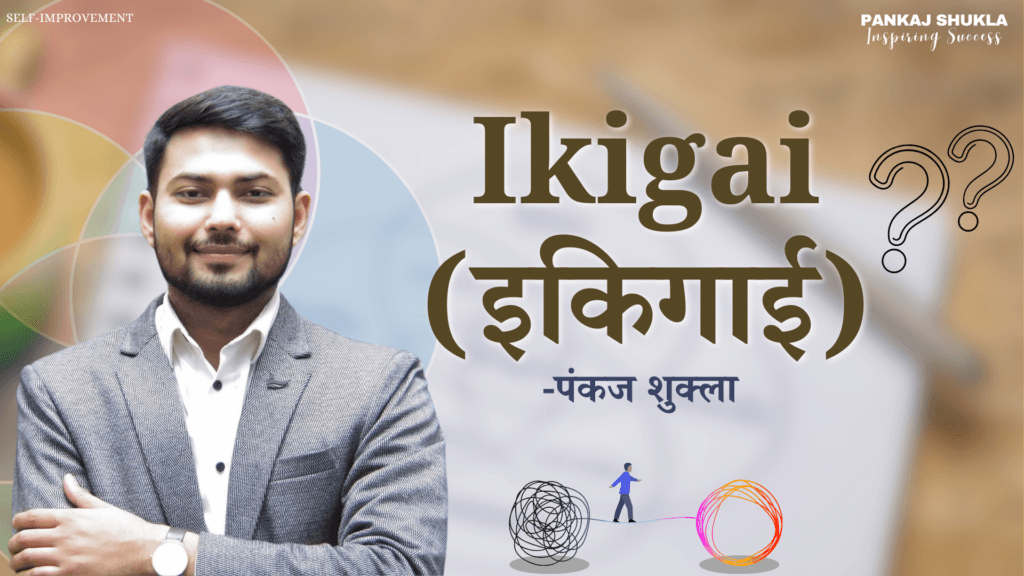Namaste Winners,
We all want to move forward in life, to become better versions of ourselves, to use our potential fully. But have you ever wondered how some people reach a level of skill in their work that seems almost magical? They don’t just set new standards in their field; they also find incredible satisfaction and meaning in what they do. This isn’t just about luck or being born with talent. It’s about embarking on a deliberate, patient, and dedicated journey – the journey to mastery. This path is open to anyone willing to commit, ready to learn and transform themselves. It’s not a shortcut, but a path of deep dedication and continuous growth. Let’s explore the important stages of this journey in more detail.
Phase 1: Discovering Your Inner Calling (Finding Your True Direction)
This journey starts not with rushing into action, but by looking within yourself. What truly excites you? What activities made you lose track of time when you were a child, before the world told you what you should be interested in? Often, the seeds of your true passion and talent lie hidden in these natural inclinations. This is like your unique path or nature – sometimes called Swadharma in Indian philosophy. It’s the field where challenges feel energizing rather than draining, where your curiosity is strongest.
Why is listening to this inner voice so important? Because when you choose work that aligns with your deepest interests, the motivation to stick with it for the long haul, through the tough times, comes naturally. It’s like planting a seed in the right soil with the right amount of sun and water – it thrives and reaches its full potential. Pay attention to your feelings: what tasks give you energy, and which ones bore you? What subjects do you naturally want to learn more about? Recognizing and trusting this inner voice is the first and most crucial step on this long journey. It gives you the direction where you can truly unlock your potential and grow.
Phase 2: The Long Road of Learning (Building a Strong Foundation Through Practice)
Once you have a sense of your direction, the real and longest phase begins: the period of learning, practice, and dedicated effort. This is the apprenticeship stage. It can take years, and it demands immense patience, humility, and a lot of hard work. Think about musicians mastering an instrument or artisans perfecting their craft – often spending years in dedicated schools of training (like the Gharanas in Indian classical arts) just practicing the basics before they can innovate. This phase has its own stages:
- Deep Observation (Soaking it All In): In the beginning, your job is to observe silently and attentively. Watch the experts, understand the processes, learn the rules, and absorb every detail of your chosen field. Be like a sponge, soaking up knowledge and experience without judgment or impatience.
- Dedicated Practice (Sharpening Your Skills): Next comes practice. This isn’t just mindless repetition; it’s Deliberate Practice. It means identifying your weaknesses, working specifically on them, and constantly pushing yourself slightly beyond your current comfort zone. This is where real skill is built, where your mind and body get accustomed to the work, and the necessary pathways form in your brain. As Mahatma Gandhi wisely suggested, practice is far more valuable than just talking about something.
- Active Experimentation (Testing Your Knowledge): Once you have a good grasp of the fundamentals, it’s time to experiment. You start applying what you’ve learned in different ways, playing with the rules, trying new combinations. You move from being a passive learner to an active participant, using your knowledge creatively.
The Reality of This Path: Struggle and Patience This learning phase isn’t always exciting or easy. It often involves boredom, repeating the same tasks over and over. Sometimes the environment is difficult, mentors aren’t perfect, or you face criticism. This is where your patience and determination are truly tested. Thinkers like Robert Greene emphasize that we shouldn’t run away from these difficulties but embrace them. Boredom teaches you focus, criticism helps you see your flaws, and tough situations make you stronger.
The most important thing in this phase is to value learning above money, comfort, or immediate results. Staying humble, accepting that you still have much to learn (what Greene calls “reverting to a feeling of inferiority”), and trusting the process are key. The message from the Bhagavad Gita is relevant here: focus entirely on your actions, on the learning and the work itself, without being attached to the immediate outcomes. This struggle is what shapes you and prepares you for the next level.
Phase 3: Seeking Experienced Guidance (The Importance of Mentors and Moving On)
Learning on your own is possible, but a good guide or mentor can dramatically speed up your progress. The traditional Indian Guru-Shishya (teacher-student) relationship highlights the deep value of learning from someone experienced. But what kind of mentor should you look for? Not just someone with information, but someone whose way of thinking, whose dedication to the craft, inspires you. You need to absorb not just their knowledge, but also their mindset.
The relationship with a mentor is intense. You learn with deep respect, reflect on their guidance, and follow the path they show. The story of Ekalavya in the Mahabharata, though complex, symbolizes this intense dedication and focus towards a source of inspiration. However, there comes a crucial turning point in the journey to mastery. Greene calls this Creative Separation. Eventually, you need to step out of your mentor’s shadow. You must combine what you’ve learned with your own unique experiences and perspective to forge your own path. If you only ever imitate your mentor, you’ll never develop your own original voice. This separation isn’t disrespect; it’s the highest form of respect – taking the knowledge they gave you and giving it a new dimension through your own creativity.
Phase 4: Navigating the World (Developing Social Intelligence and Impact)
No matter how skilled you become, you don’t work in isolation. You have to interact with people. Therefore, developing social intelligence – understanding and navigating social situations effectively – is a vital part of the mastery journey. This isn’t just about being polite; it’s about truly understanding people – their intentions, insecurities, and motivations. Ancient texts like Chanakya’s Arthashastra emphasize the importance of understanding human nature.
This means:
- Reading between the lines, understanding unspoken cues.
- Being aware of group dynamics and power structures.
- Communicating effectively, but also letting the quality of your work speak for itself.
- Crafting an appropriate professional persona – one that is authentic but also consciously managed.
- Handling potential conflicts or office politics wisely and constructively.
This social intelligence helps you get your skills recognized and allows you to make a positive impact on the world. Without it, even the greatest talent can go unnoticed.
Phase 5: The Creative Leap (Awakening the Dimensional Mind)
After years of dedicated practice, mentorship, and navigating the social world, you enter the final and most exciting phase of mastery. Robert Greene calls this the awakening of the Dimensional Mind. Your mind no longer thinks in a simple, linear fashion. You can connect ideas from different fields, see patterns that others miss, and think with great flexibility. Individuals like Rabindranath Tagore, who mastered multiple art forms like literature, music, and painting, exemplify this.
Key features of this stage include:
- Deep Intuition: Solutions and insights seem to come to you effortlessly. This isn’t magic; it’s the result of the vast knowledge and experience stored in your subconscious mind. The mathematical intuition of Srinivasa Ramanujan is a famous example.
- Integration of Knowledge: You seamlessly blend logic and intuition, analysis and gut feeling.
- Flexibility and Openness: You aren’t afraid of uncertainty (what poet John Keats called ‘Negative Capability’), you remain open to new ideas, and you know how to capitalize on unexpected discoveries (serendipity).
- Originality: You contribute something new and unique to your field, leaving your own distinct mark.
To reach this level, you need to constantly challenge your mind, explore diverse interests, and sometimes just step back and allow your subconscious to work by alternating periods of intense focus with rest and reflection.
The Underlying Mindset (Essential Attitudes for Mastery)
This entire journey is supported by certain core attitudes:
- Unwavering Discipline: Committing to practice daily, even when you don’t feel like it.
- Persistence and Resilience: Learning from failures, never giving up, bouncing back from setbacks. Remember the call by Swami Vivekananda: “Arise, awake, and stop not till the goal is reached.”
- Deep Focus: Developing the ability to concentrate deeply on your work for extended periods, shutting out distractions in today’s noisy world.
- Embracing Difficulty: Seeing challenges not as roadblocks, but as opportunities to learn and grow stronger.
- Patience: Understanding that mastery takes time and trusting the process. As the Gita suggests, the restless mind can be tamed through consistent practice.
A Journey of Transformation
The path to mastery is undoubtedly long and challenging, but it’s far more than just learning a skill. It’s a journey of self-transformation, of discovering your true potential and bringing it into the world. It offers deep satisfaction, a sense of purpose, and a unique meaning to your life. This journey changes you from the inside out, making you the person you have the potential to become.
This path is open to you too. All it takes is the courage to take the first step, listen to your inner voice, and then commit to the process with dedication and patience. May your journey be successful!








